John Janaro's Blog, page 104
January 25, 2021
Our Lady of Guadalupe and Her Children "in America"
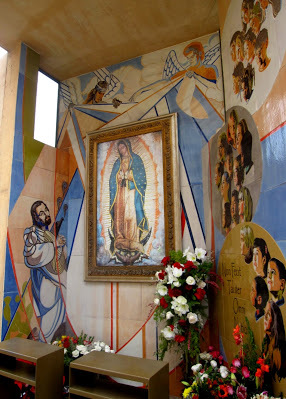 Chapel in Los Angeles Cathedral (art by Lalo Garcia)It has been 22 years since my first "encounter" with Nuestra Senora de Guadalupe in Mexico on January 25, 1999. Many things have changed since that time, but my basic convictions from those days have only grown stronger.
Chapel in Los Angeles Cathedral (art by Lalo Garcia)It has been 22 years since my first "encounter" with Nuestra Senora de Guadalupe in Mexico on January 25, 1999. Many things have changed since that time, but my basic convictions from those days have only grown stronger.I believe that we Anglo-American Catholics are called to a special solidarity with our southern neighbors, especially Hispanic Catholics. This conviction arises not only from historical and geographical circumstances, but also and in particular from the plea of the Pope and the bishops of this hemisphere 22 years ago at the Synod on America, which resulted in the publication of the Apostolic Exhortation Ecclesia in America (1999) — I was privileged to be present in Mexico City when this document was promulgated, and my attendance at related papal events with Saint John Paul II and pilgrims from numerous countries has permanently imprinted upon me the deep significance of the need for solidarity among the peoples of "the American continent." And this solidarity is rooted in a particular way in our being placed — in common — under the patronage of Our Lady of Guadalupe.
I have made three times a pilgrimage to the Basilica of Our Lady of Guadalupe in Mexico City; her presence on our soil is a special blessing that has never ceased to astonish me and fill me with hope; she is indeed the Mother of all who dwell here, in what she called "this land" back before there were any borders. For the "American hemisphere," in my opinion, Guadalupe is not just "another Marian devotion." It has a particular relevance. La Guadalupana is a unique sign for us especially (but not only for us, because the reality at the shrine is a living miracle; as an image of Mary, nothing like it exists — it is as scientifically inexplicable as the Shroud, and the only way to describe it is to say that it is the "presence" of Mary, as she told Saint Juan Diego, "build me a house," and "I will dwell there"). We in the United States of America must come to know Our Lady of Guadalupe, we should have her image in our homes and in our hearts, we should pray to her for healing of the ills that beset our country and our continent.
What I have just said is supremely relevant to the actual social issues in our country today, and to how we approach them. It is relevant to how we understand ourselves and our responsibilities toward one another. To be sure, Catholics who are citizens of the different nations of the American hemisphere have to deal "hands on" with many specific problems. It is only human that we find different viewpoints, different perspectives, and different concerns about the specific steps that we should take to move forward. Government officials, civil society, public opinion, and our various roles within society touch upon these problems in different ways. We each have particular responsibilities in life, and it is within our own fidelity to our personal vocations that we make our most constructive contribution to building up the common good.
.
God became man. He wants to live the details of our lives with us, and bring forth with us the fruits of community, solidarity, healing, and peace. He wants to build up among us the social goal we seek: a culture of life. Even more, He Himself — present, acknowledged, celebrated, and loved — is the culture of life, because "He is life" and even those who don't know Him seek Him insofar as they seek the truth about life.
If we want a culture of life, we must first of all ask Him for life. We must pray. We all think that we already know this, but I don't think we really understand what this means for how we live and think and make decisions. I don't understand it. I will forget about God within five minutes after I finish writing this. But I think it has something to do with prayer being at the center of our decisions and actions, rather than floating around the periphery. In prayer is the awareness that we depend totally on God and that He is present, now, with us in Jesus Christ. This is at the center, at the core, at the depths of every moment and every thing. This is what it is all about. How easy this is to forget.
.
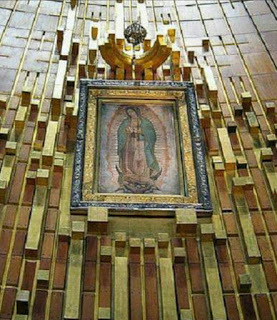
God gives us signs to help us remember. For America, one of the great signs is Our Lady of Guadalupe. Let's face it, Anglophone Catholics in the United States know very little about the concrete significance of this sign. This needs to change. She is our Mother, and she is there (if you go on pilgrimage there you will understand what I mean). Even if we can't visit her, we can honor her, we can recognize this extraordinary presence among us, who is closer to where we live than many of our own relatives.
I do not believe that we Catholics will succeed in any of our hopes for the future of the United States unless we place Our Lady of Guadalupe at the center. She didn't come here for nothing. She has a plan. The Virgin is very concrete — she is, after all, a woman dealing with little children.
.
As we live our lives, and formulate, reconsider, and reformulate our opinions and engage in constructive dialogue with one another, let us first of all embrace La Guadalupana's "plan" for America: North, Central, and South — for all of us who live on "the land" which she has specially blessed with her maternal solicitude since the beginning of the modern epoch.
.
This "plan" is not a detailed program. Various conversations, ideas, and proposals for accomplishing the good in solidarity with one another will no doubt emerge from our commitment to take up the love of God and the love of our neighbor with a particular tenderness and awareness. For all of us, however, it begins with prayer, attentiveness, and openness to God's will.
.
It is fundamentally a matter of the heart. It is a matter of living as brothers and sisters of Jesus and one another in "the land," under the care of our Mother, formed by the guidance she gives us from her mother's heart.
January 23, 2021
The Gift of Every Human Life

As we give thanks to God for the gift of human life, we pray that the laws of nations will recognize the human dignity and protect the lives of children in the womb, respect and support their mothers, show compassion to the poor and vulnerable, the persecuted, abused, and forgotten, and defend every human person from conception to natural death, through the whole course of their earthly sojourn.
Every human person is precious to God. Every human person is worthy of love.

January 22, 2021
The Miracle of Human Life Becomes More Vivid to Me
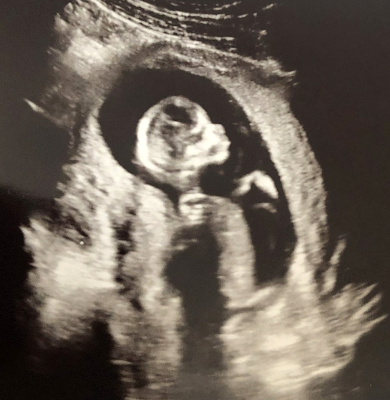 This is my grandchild, taken from a sonogram several weeks ago.
This is my grandchild, taken from a sonogram several weeks ago. Of course, the "live sonogram" is always much more amazing, because it's a video and the child moves around (a lot!).
It seems like only yesterday that Eileen and I watched in wonder the sonogram video of this child's father (it was 24 years ago, actually).
Of course, no matter how old we are now, every single one of us "started out" this way!☺
What a tremendous mystery it is to be human, to be given the gift of life as a person - always worthy of love, care, affirmation, support, and protection - and to be entrusted to others, to relationships that span multiple generations, and by which each one of us is placed within a family, and introduced into the history of the whole human family where we are all brothers and sisters.
We all belong to this great history, we are each called to take our place within it, to live and help one another as we journey through it, contribute to its heritage (even in the smallest ways), and finally pass beyond it to its fulfillment - which is our destiny because we are all children of God.
As I get older, the miracle of human life becomes more vivid to me: I have been a vulnerable child totally dependent on others, a parent whose children depended on me, again a son whose dying father needed so much my love and active concern at the end of his life, and now embarking upon the road of yet another kind of presence and solicitude for my children's children, for this new child (whose profile in this picture indicates that the kid already has "the Janaro nose"😉).
My own life has not always been easy. It has had a lot of suffering. But it has always been worth it. And when I fail (which is a lot!), it is always possible to remember what I know is real, what has value, and to begin anew.
Eileen and I want to say this today: "Dear precious grandchild, we love you!"❤
January 21, 2021
Saint Agnes Witnesses to the Transformation of Life in Christ
 She was not the first woman to sacrifice the possibility of marriage and motherhood in order to follow Jesus in a deeper way.
She was not the first woman to sacrifice the possibility of marriage and motherhood in order to follow Jesus in a deeper way. But Saint Agnes gave physiognomy and voice to consecrated virginity as a marriage to Jesus, a singular spousal dedication to him that engages a woman's heart completely, beyond the competition of all human interests and even life itself.
The radiant life and sacrifice of a 12 year old girl in third century Rome, and no doubt her continual intercession thereafter, have fostered in the Church an awareness of the Church's own deepest life.In an ancient liturgical antiphon, Agnes says: "I am espoused to him whom the angels serve; sun and moon stand in wonder at his beauty."
There are numerous stories about this extraordinary heroic young woman, but what is certain above all is the astonishing ardor with which she embraced martyrdom when it was imposed upon her. It was for her the culmination of the singular commitment and focus of her life, which was her response - empowered by the Holy Spirit - to the gift of the love of Jesus, experienced in a profoundly personal that raised up and defined the whole form of her life.
Saint Agnes was venerated from the beginning (right after her death) by the clergy and the people of Rome, and then throughout the Western Church and also in the Eastern Churches. This was not unusual for martyrs in the early centuries of Christianity. But there was another aspect of her witness that was radically significant for Christian and human history. Indeed, we must try to appreciate the fact that St. Agnes showed the world a kind of life, a freedom, an originality, a way of giving and loving that were new for human beings, and especially for women, in the long and tired history of the human race. She indicated that women are cherished, ultimately, in a way no one had ever imagined.
She displayed the transcendent passion, creativity, and freedom of belonging to Jesus. Her martyrdom was transfigured into a joyful procession in which she made haste to give her whole self to Jesus, not only fearlessly, but with the conviction that in him she would attain the super-eminent fullness of life: a life immeasurably beyond anything she could have attained naturally even if she had lived a long life on this earth. “What I longed for, I now see; what I hoped for, I now possess; in heaven I am espoused to Him whom on earth I loved with all my heart" (expressed in another antiphon of the ancient liturgy that honors her on this, her feast day).
Agnes's witness shines brightly on the fact that for the spouse of Christ, nothing is lost. The sacrifices that are made do not express contempt for the goodness of earthly life, but rather the ecstasy of a love that seeks the Source of all goodness, and thereby finds a hundredfold of fruitfulness even for the life of this earth.
St. Agnes, a young girl, a virgin and martyr for the love of Jesus Christ, thus lived with such fullness that her presence and solicitude continue to this day. For seventeen hundred years, women have followed her example and given their whole selves to Jesus, loving him as their Spouse in prayer and seclusion, and also by serving him in those in need.
We call them nuns and sisters. We even call them "mothers." Today, more and more, we call them our friends and colleagues too, whether in religious habit or as lay women who consecrate themselves in the context of the many new charisms that the Spirit is giving to the Church of our time.
They have sought God and followed the lamb. And in this giving of themselves, they have been the colossal protagonists, the shining stars of love and hope, the bearers of peace and compassion to this world as well.
Agnes stands as one of the pillars of the greatest "women's movement" of all time, and her witness today remains as compelling as ever. She gave up marriage on this earth and everything else even to life itself. And in Christ she became a true mother to generation after generation of daughters to this day -- of women who freely choose to give themselves away beyond the reckoning of this age, and thereby to find a fullness of life beyond measure.
January 20, 2021
"An Anchor For the Soul"
This was an eventful day in my country. A peaceful and successful transition was achieved in the executive branch of our federal government.
Many unpredictable circumstances will contribute to how public affairs unfold in the coming months and years in relation to the various levels of USA government(s) and society. Obviously these matters will remain an ongoing source of attention, concern, constructive engagement when possible, and prayer for all of us here and throughout the world.
But more than enough has been said about these things. For our part as Christians, let us be always committed to truth and charity, to civility and dialogue, and to building up the good according to the responsibilties that have been entrusted to us in our daily lives.
For this, we have a firm place to stand, an "anchor of the soul" - Jesus, for whom we live. He has conquered sin and death, and as Lord of history he calls us to share in his victory, to place our trust in him as we live in our times, in our work, in our personal and social responsibilities, in our families and communities, as we endeavor to love God and our neighbor, struggle against obstacles, and endure suffering.

This is also the Week of Prayer for Unity Among Christians, a matter of particular importance in these times of anxiety, uncertainty, and divisiveness that can pose a special challenge to our efforts to grow closer to one another in love, to be brothers and sisters.
In the Roman Catholic liturgy this week, the Collect is a simple prayer:

Less simple, perhaps, have been my attempts to virtually "illuminate" this prayer in my "digital scriptorium." Here are a few different examples that represent - if nothing else - a continuing learning process and a helpful exercize. In any case, appending them here allows them to be archived.


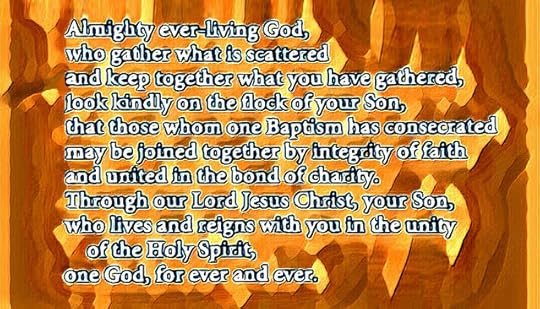

January 18, 2021
30 Years Ago: The "Gulf War" Begins

Since last Fall I have been peeking in from time to time to a journal I kept from September 1990 to May 1992. Not long ago, these ruminations and the events that inspired them were 25 years old (i.e. in 2015), and I reproduced some selections in this blog. In the blinking of an eye, it seems, the same journal is now 30 years old.
Now we are marking the 30th anniversary of the beginning of the "Gulf War," or the first part of the USA's war in Iraq. The 1991 war was aimed at driving Saddam Hussein's regime out of Kuwait, which Iraq had invaded the previous Summer. The rapid and enormous military mobilization and response led by the USA was over in a few months, but it was the beginning of a perplexing and problematic struggle in that part of the world that had many unforseen and sometimes catastrophic consequences over the next three decades.
In fact, the West is still involved in the implications of what happened a hundred years ago when the British and French created a constellation of "nation-states" out of the ruins of the Arabic domains of the Ottoman Empire. (Then, of course, Israel was established after World War II.)
Hardly any of the particulars of the drama in the region, or regarding the radical Islamic groups that would emerge during and after the USA's interventions, were predicted in 1991. At the time, the Gulf War was a very popular undertaking in the USA. It was notable for being the first war to be "televised live" (it being the early days of 24 hour cable news). For the media and many who watched in this country, the war seemed to have all the superficiality of a sports game.
That troubled my younger self. I saw yet another sign of the decadence of our society in the manner in which people seemed happy to sit on their couches and "root for the team," even if no one really knew why "the game" was being played. I was not referring to the servicemen and women in the military who did their duty in good faith, and exhibited courage then (and later) in difficult circumstances.
Now, in 2021, I am looking at my old journal as a historical artifact of what feels like a very different period in time. Yet these past events fit into the bigger picture of the ongoing epochal shift that is creating the first globally interactive world, for better or for worse (or perhaps for better and for worse, with respect to different aspects of life).
In any case, here is what the 28 year old graduate student wrote (by hand) in that journal during these January days 30 years ago:

January 17, 2021
Wow, Laura Pausini is Such a Great Singer!!🎶
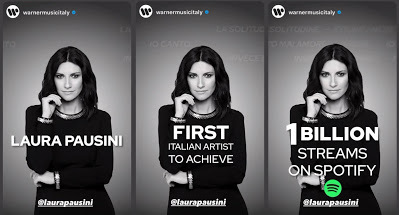 Below I have posted a link to a very moving song, sung by one of Europe-and-Latin-America's most celebrated voices.
Below I have posted a link to a very moving song, sung by one of Europe-and-Latin-America's most celebrated voices. Most anglophones still don't know this legendary singer. Yet she has sold over 70 million records worldwide, which is insane considering that she has never broken into the Anglo-American English language market. She has over one billion streams on Spotify. Obviously, lots of people around the world love her music.
Laura Pausini is already the undisputed “Prima Donna” of Italian popular music (and arguably - at least for the pop melódica style - the “Primera Mujer” of Hispanic music, with her quarter century of Spanish language songs deeply influencing a whole generation of Latina and Latino singers).
Laura has a magnificent, powerful, versatile voice that enables her to sing a broad range of styles, and appeals to audiences of all ages. She is a magnificent singer with palpable charisma, but also a woman who hasn’t let global superstardom go too much to her head: she manages to be both classy and down-to-earth; she is openhearted, funny, accessible, and lovable to people from a variety of cultures: not only from her native Italy, but also Spain, Mexico, Brazil, and many other places that all feel that she is "one of their own."
It's a remarkable natural talent she has: to have a genuine "international appeal" while still keeping connected to her roots, with her family and friends in the small village of Solarolo near Ravenna in Italy.
Laura's latest song, “Io Si” - featured in the movie The Life Ahead starring the remarkable 86 year old Sofia Loren - has been nominated for an Academy Award. I hope she can add the Oscar to her American Grammy (first Italian woman ever to win one, ironically for an album in Spanish from 2004) as well as her six Latin Grammys and countless international prizes.
Here is Laura from a recent event, singing “Io Si” in Italian but speaking in English (which is her fifth language). You don't need to understand Italian to appreciate this beautiful song: (mobile site click link HERE)
January 16, 2021
January is Still January After All
At the beginning of the week I was singing the praises of mild sunny days. Indeed, things got even warmer, so that on Thursday I was out in short sleeves, not just for a walk but also to soak in the sun while reading (see #1 [picture] below😉).
By Friday, however, the weather started getting angry. The heavy, gray, damp air moved in.
This afternoon, the rising wetness and the (relative) lowering temperatures brought on the sudden surprise documented in #2 [video]. I was lucky I didn’t get caught in the middle of this burst of rain-snow-sleet-whatever-it-was.
The squirrel in #3 [video - zoomed in] was not so lucky, but it made a fast dash for shelter. There was some “white stuff” (so it would appear from the pine tree in our backyard shown in #4 [photo], which I took from inside the house, behind the kitchen window). There was a bit more of it later. None of it stayed around for very long.
That’s January in Virginia. Next week could bring all sorts of surprises. And then comes February!


January 15, 2021
Why Do We Burn Against One Another?
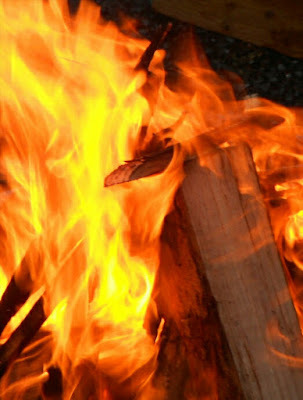 Fires of anger and pain are burning in the world today.
Fires of anger and pain are burning in the world today. Human fires are ablaze, exploding beyond the bounds of human frustration, scorching the earth with divisiveness, vengeance, greed, rapaciousness, robbery, cruelty, murder. Human desperation seems intent upon burning up the world in fury, because it finds that nothing in the world can satisfy the human heart.
We cannot satisfy one another, nor can we repair the injuries we inflict on one another. So we entrench ourselves in opposing factions and continue to tear one another apart.
An eclipse of ugliness is upon many places in the world, covering over many facets of life with shadows. For too long we have sought this darkness, to cover over everything in reality that cannot be controlled by our own power. We have wanted to indulge the illusion that we are answerable to nothing beyond ourselves, that we are the masters of our own individual universes. Yet we cannot control our inevitable conflicts with others who grasp for the same power, and so we burn against one another.
This is what is at the core of our social problems, our political catastrophes, our wars. Our violence is a sign that we don't know why we're alive, and that we're frustrated and desperate in the face of our failure to generate our own identities and purposes for living.
But why are we alive?
We have been created and called to find our fulfillment in the Infinite Mystery of God. We are given freedom so that we might grow in love as we journey toward God through history together with those who have been entrusted to us. But we are so indigent, so terribly vulnerable, so desperately in need. We stand before one other like open wounds, aching for "something" we don't know how to articulate, nor how to give to one another.
We are aching with our need for the love of God, and we will never have peace if we try to live our lives and organize the world pretending that God doesn't exist.
But where can we hope to find God?
It is Jesus Christ who brings us God, brings us healing, and brings us together.
January 13, 2021
Luminous Spaces
It is the middle of an eventful January 2021. In the midst of all our trials and tribulations, the world has not disappeared. God is good, all the time! As of this moment the breath of life is in me, this being in accordance with God's wisdom and loving plan leading me to my eternal destiny.
I shall breathe deeply.
The first digital art image below captures something of the impression of a nearly perfect Winter afternoon in the Shenandoah Valley. Bright sun with a few clouds, 52 degrees(F), barely a breeze in the brisk air, and luminous spaces in every direction on the paths of my walk today.
Rejuvenating!
The second digital art image presents the January sun as it sets beyond the pine trees.





